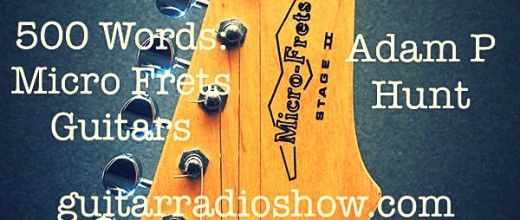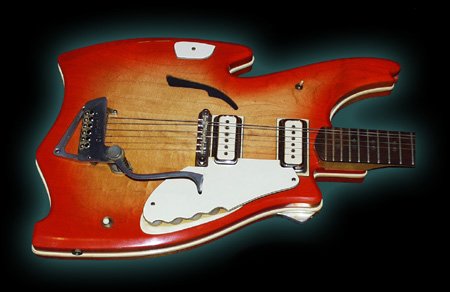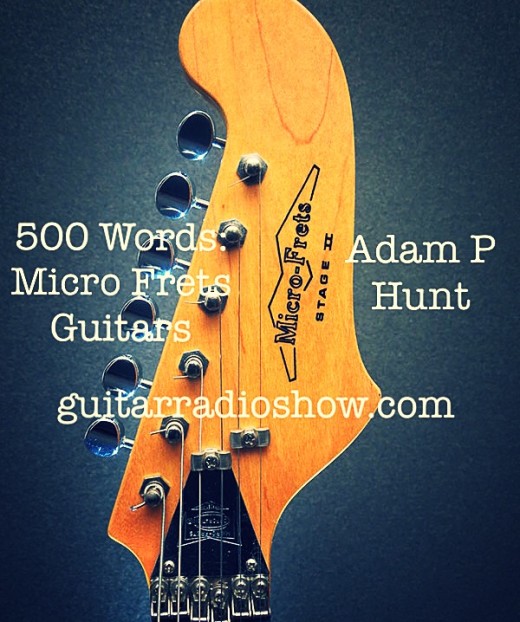-
19May2016
- share:
Micro Frets Guitars- 500 Words with Adam P Hunt

500 Word Micro-Fret Guitars
Quick! Name the guitar company that had Carl Perkins, Mike Rutherford, Mark Farner, and Martin Gore as one of their many fans?
Nope, it’s not Fender, Gibson or even Gretsch .
I’ll give you a couple of hints, the majority of their guitars were semi hollowbody electrics and some even featured a built in wireless system.
You may be forgiven if you said Rickenbacker but it was Micro-Frets.
Who?
You’re forgiven if you hadn’t heard of Micro-Frets because they sank beneath the waves in the Seventies.
Started by Maryland based engineer Ralph S. Jones in the early Sixties Micro-Frets had more to do with Washington state based builder Harvey Thomas than any of the major builders at the time.
Like Harvey Thomas’ designs Ralph Jones’ guitars where both idiosyncratic and forward-looking.
Jones’ guitars used a 52-piece “Micro-Nut” compensated nut that allowed a player to intonate each string at the nut.
While some of Jones’ guitars sported DeArmond pickups quite a number of Micro-Frets also sported pickups by the late Bill Lawrence.
During their heyday Micro-Frets produced mandolins, baritones and basses but they are most closely associated with their unique looking guitars.
Both rockabilly legend Carl Perkins and Depeche Mode’s Martin Gore favored the dual cutaway Spacetone. While difficult to describe the Spacetone looked somewhat like a Gretsch Duo Jet with the paintjob of a Burns Double-Six.
Somewhat more unusual was the Orbiter. Imagine what would happen if you hired Gumby creator Art Clokey to cross Gretsch Billy-Bo Jupiter Thunderbird, and a Rickenbacker 360 then you may get an idea what an Orbiter looked like.
Yeah, funky but in a good way.
Another standout is the Huntington. To say that the Huntington is something like a paring of a BC Rich Seagull that has gone through some radioactive mutations does the guitar a disservice. But there are some guitars that are so amazingly bizarre they are beautiful.
Information concerning Micro-Fret guitars is somewhat spotty but there appears to be an effort during the Seventies by a man named David Sturgill to keep the name going with the short lived Diamond-S model.
In my research I’ve only been able to find one demonstration of a Micro-Fret guitar on YouTube, a Stage II posted by mjm33mjm. Tonally the Stage II seems to have it’s own thing going for it and is somewhere between a Jazzmaster and a Rickenbacker or some sort. The sound is throaty, woody but still has plenty of punch and sparkle. Granted, a Micro-Fret Stage II would probably not the first guitar you would reach for if you were in a Gorgoroth cover band but it wouldn’t be out of place if you were playing early Elvis Costello songs.
More recently, however, a partnership between Will Meadors and Paul Rose has arisen to get Micro-Frets back on their feet again. I have a soft spot for early Sixties oddity guitars so I for one can’t wait to see them up and running again.
For more information check out http://www.guitar-list.com/brands/micro-frets and keep an eye on their Facebook page https://www.facebook.com/Micro-Frets-157147700976396/ for updates.



